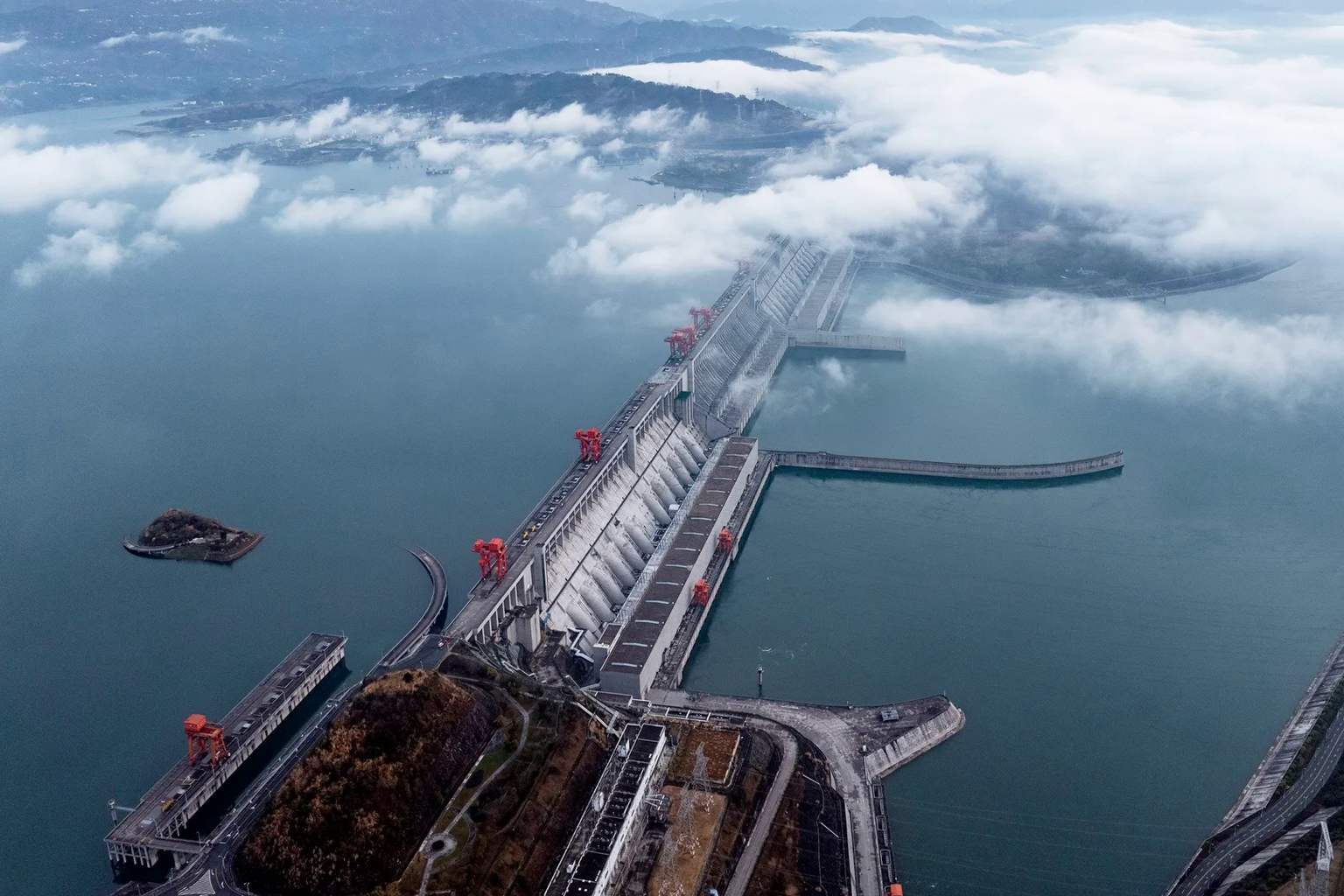Over the past two centuries, the massive amounts of water humans have held back behind dams have nudged the Earth’s geographic poles away from its axis of rotation—by about a foot in total—according to new research. This subtle shift reveals just how much our large-scale engineering reshapes the planet in ways few of us realize.
How dams cause Earth’s geographic poles to drift
Imagine spinning a basketball with a lump of clay stuck to its surface. As the ball spins, the clay slowly drifts from the axis of rotation, carried by the momentum. Earth works in a similar way: its viscous mantle flows beneath a rigid crust, allowing the geographic poles—the points where Earth’s spin axis meets the surface—to wander slightly over time. This phenomenon, called true polar wander, can be affected by shifts in how mass is distributed across the planet.
A recent study published in Geophysical Research Letters used global data to track 6,862 dams constructed between 1835 and 2011. Collectively, these dams trap enough water to fill twice the volume of the Grand Canyon. Holding back this much water—even though spread across the globe—has been enough to push the poles by roughly 1 meter (3.7 feet) over the last two centuries.
Natasha Valencic, a lead researcher from Harvard University, explains, “By storing water behind dams, we remove liquid mass from the oceans, slightly lowering sea level, but we also redistribute mass on land. This mass redistribution causes minute shifts in Earth’s rotation axis.” While the overall shift may seem minor, understanding it helps scientists better predict how melting glaciers and ice sheets could drive future shifts in the poles as our climate changes.
Two phases of pole movement linked to dam locations
The pole shift didn’t happen all at once. Between 1835 and 1954, many dams were built primarily in North America and Europe, nudging the pole about 8 inches (20.5 centimeters) toward the equator near the 103rd meridian east—a line crossing Russia, Mongolia, China, and Southeast Asia.
After 1954, dam construction boomed in East Africa and Asia. This second phase moved the pole approximately 22 inches (57 centimeters) toward the 117th meridian west, crossing western North America and the South Pacific. In total, this amounts to just over a foot of pole drift, measured cumulatively over nearly two centuries.
These shifts might be imperceptible in daily life, but they illustrate how human activity can alter fundamental geophysical processes. To put this in perspective, when I first flew across the United States and looked down at huge reservoirs held back by iconic dams like Hoover and Glen Canyon, it struck me how deeply we have reshaped not just the landscape but, as it turns out, even Earth’s very spin axis.
Why uneven water distribution matters for sea level rise
Valencic’s team stresses that the way water is distributed matters greatly when estimating sea level rise. The 20th century saw a global average sea level rise of about 0.05 inches (1.2 mm) per year. Yet, about 25% of that rising ocean water was actually held back by human-made dams. This stored water creates a localized drop in ocean levels, and because sea level rise isn’t uniform worldwide, dams can change how sea levels vary regionally.
The location and volume of reservoirs will influence which coastlines experience faster or slower sea level rise, an important factor for coastal communities and policymakers planning for climate impacts.
On top of that, humans aren’t just rearranging water at the surface. Pumping groundwater from beneath the Earth’s crust has also shifted mass enough to tilt the planet slightly. One prior study found that between 1993 and 2010, groundwater depletion caused the Earth to tilt about 31 inches (80 centimeters) eastward. These subtle geophysical influences remind us how interconnected humanity is with Earth’s complex systems—and how our choices ripple through the natural world in surprising ways.
Have you ever thought about how dams might shift the entire planet? What other hidden impacts do you think our infrastructure has? Share your thoughts below and let’s explore together how our actions reshape the Earth in ways big and small. If you found this fascinating, pass it on to friends and family curious about the forces shaping our world.

I’ve wondered what the ice weight of Iceland is. One day it will be gone and science can guess how the axis tilt will react